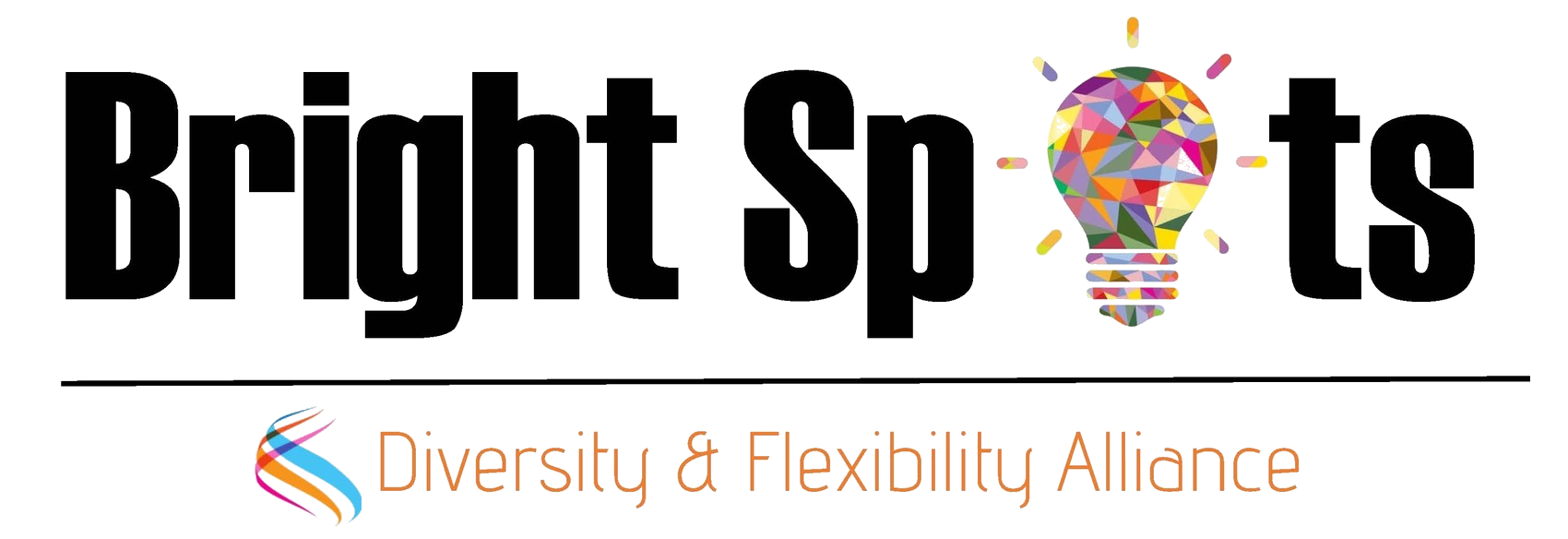Our Spotlight on Flex showcases professionals from member organizations who exemplify personal and professional success while working a flexible schedule. Their stories illustrate the long-term benefits that flexible schedules offer to both individuals and organizations.
July 2020 Spotlight on Flex
For July 2020, we are pleased to share insights from Samantha Lee, Partner, Wiley Rein (Washington, DC)
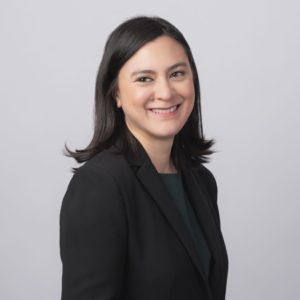 Diversity & Flexibility Alliance: How have you made flexibility a priority and a success with your schedule?
Diversity & Flexibility Alliance: How have you made flexibility a priority and a success with your schedule?
Samantha Lee: I’m a Wiley Rein lifer; I summered at the firm and have been here ever since. I was pregnant with my son while I was a senior associate, and I assumed I’d return full time post leave as if nothing had changed. But after I had my son, I realized that coming back full time and pretending nothing had changed was definitely not going to work for me! Luckily, there are models of flexible work at the firm to look up to; I knew I needed to take a flexible approach with my return to work in order to maintain my mental health and my personal life, to be able to thrive in a high pressure position, balancing my commitment to client needs, and be active in firm citizenship.
I spoke to the firm’s Professional Development and HR teams to discuss my options – I didn’t know what flexible work would look like for me. The firm was supportive from the very first person I spoke with in both departments, and that support carried through to my practice group leaders (PGL). I was nervous about speaking with my PGLs because they play such a huge role in my professional development at the firm. But their immediate response was unhesitating support. They never questioned my need for flex; it was amazing and so incredibly reassuring that I was making the right choice for my career and for me.
Our nanny was also a grad student at the time, and she had to leave early on certain days for class. This allowed me to become comfortable with saying “no” because I also needed to be respectful of her schedule. The bottom line is that a flexible schedule gave me breathing room and provided the options I needed to come back to the firm after leave. Without it, I would not have stayed and been able to address some of the post-partum issues I was experiencing at the time too.
My original plan in 2017 was to come into the office every day and bill at 80% reduced hours for a year. But I stayed on this schedule for two years until I made partner in January 2020. It’s important to note that my choice to reduce my hours did not delay my path to partnership; I was promoted at the same time as my peers from my summer associate class. Once I became partner, and now that my son is older, I returned to a 100% billable hours schedule.
Even though I’m not on a formal flex schedule anymore, I still rely on flexible work in different ways. Wiley is a firm that recognizes people as people. If there comes a point where I can’t or don’t want to bill at 100%, I know the firm will support me. I know I can (and did) deliver the best quality service and work to my internal and external clients while working reduced hours. I openly share my flexible work experiences with everyone; people need to know they’re supported and shouldn’t feel stigmatized for wanting or needing to work flexibly. I understand why some people in less supportive firms feel the need for secrecy, but I don’t believe in this approach. The more people talk about working flexibly, the more mainstream it becomes.
DFA: How have the firm and/or clients contributed to your Flex Success®?
SL: I haven’t needed to address my schedule with clients; it’s just not something that comes up. I managed my reduced hours schedule by working on fewer matters, but I never gave less than 100% to every client. Because our group is so focused on building a talented and sustainable group, it’s easy to rely on a team and give younger associates the opportunity to learn and progress.
The firm has always given me what I needed; I have a great flex success story. I know the firm would support me again and any other attorney looking to incorporate a flex schedule in a heartbeat.
DFA: How has working flexibly made your career more sustainable and contributed to business/professional development opportunities?
SL: By reducing my annual billable target, I was able to focus on firm citizenship and business development opportunities that were important in my career. I was part of the recruiting committee, traveled for on campus interviews, and was able to take the time to speak to law students interested in working at Wiley Rein. Had I been billing at 100%, I would not have been able to do these things.
DFA: Looking back, would you do anything differently, or what would you tell your younger self?
SL: I would have spoken up sooner. Once I realized that flexible work was an option and what I needed, I waited too long to ask for it.
DFA: How do you recharge, and how do you pay it forward?
SL: Part of it’s maintaining a flexible schedule and the idea of being kind to yourself in all aspects. For me, that meant being OK with asking for childcare help one weekend a month so I could take time to recharge and focus on me. There’s nothing wrong with asking for help. My biggest responsibility is to be transparent, advocate on behalf of flexible work as a resource, and be an example of how it’s a viable option for career success. It can work for everyone.

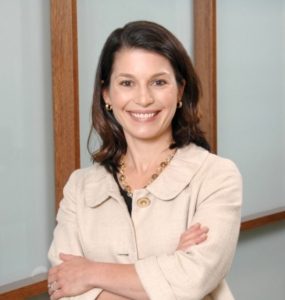
 For May 2020, we are pleased to share insights from Heather Wenzel, Partner,
For May 2020, we are pleased to share insights from Heather Wenzel, Partner, 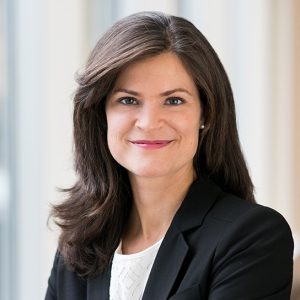 Erin Howell: Ever since I was a junior lawyer, flexibility has always been important to me. I started my career as an insurance regulatory associate at Dewey & LeBoeuf, in 2008 just as the economic downturn hit. The firm started offering partially paid sabbaticals to attorneys. I used that opportunity in 2011 to evaluate my career and figure out what my next steps were going to be. At the time, I had three young step-children, and my sabbatical was a great way to spend time together as a family and figure out my next steps. As you can imagine, working for a firm on the verge of bankruptcy is not pleasant and highly stressful; I wasn’t busy, I wasn’t developing professionally the way I wanted to, and it made me doubt if the practice of law was right for me. It took me the better part of my sabbatical (I used nine months of the allotted 12) to figure out if I wanted to stay in big law or do a complete career overhaul.
Erin Howell: Ever since I was a junior lawyer, flexibility has always been important to me. I started my career as an insurance regulatory associate at Dewey & LeBoeuf, in 2008 just as the economic downturn hit. The firm started offering partially paid sabbaticals to attorneys. I used that opportunity in 2011 to evaluate my career and figure out what my next steps were going to be. At the time, I had three young step-children, and my sabbatical was a great way to spend time together as a family and figure out my next steps. As you can imagine, working for a firm on the verge of bankruptcy is not pleasant and highly stressful; I wasn’t busy, I wasn’t developing professionally the way I wanted to, and it made me doubt if the practice of law was right for me. It took me the better part of my sabbatical (I used nine months of the allotted 12) to figure out if I wanted to stay in big law or do a complete career overhaul. For March 2020, we are pleased to share insights from Kate Saracene Partner,
For March 2020, we are pleased to share insights from Kate Saracene Partner,  MK: Boston Consulting Group (“BCG”) is a dream job for me. I love the impact and variety of our projects and the caliber of our talent. I started as an associate, then consultant to project leader, was promoted to principal, and then again to my current role as a managing director and partner in 2018. BCG has been so supportive every step of my career – between transferring offices twice because of my husband’s career and working at a reduced [hours] capacity. A year into my role as a project leader in 2012, I switched to a flex schedule – this was even before I had kids. I had been at BCG for five years, was traveling extensively, and working a lot of hours. I was at the point where I was jealous of my friends at other jobs who had time during the week (not just the weekends) to do the things they enjoyed. I wanted that option too. But I struggled with how to achieve that work/life control when my colleagues were working more than that. I didn’t think it was fair to change my schedule when the rest of the team was counting on me. I have a background in economics, and after looking at the amount of hours/week I was putting in, I realized the marginal cost to me personally, of each additional hour past 40 hours/week, was a lot higher than the marginal cost of the first 10 hours I worked. I wanted to optimize on the margins; I was willing to give up 20% of my pay in order to shed 20% of the hours that had the highest personal cost to me. In other words, I wanted to work at an 80% capacity by being in the office five days a week, leaving early to be home and have dinner with my husband, and not worry about opening my laptop in the late evening hours. Of course, there were times I had to stay late or meet with clients, but it was an absolute step change in my relationship with managing work and life. I’ll be honest; I didn’t think a reduced schedule was going to work at first. But I needed to make a change. My partners were extremely supportive, clients knew about my schedule change, and BCG put extra resources on my teams so coverage was always in place. I was able to turn down certain projects with confidence that it wouldn’t impede my advancement. In 2013, I had my first child, and I probably would not have come back to work at BCG if I didn’t have flex options in place. I’ve made flex work for me as needed during different stages in my career and life. I was a principal when I had my second child, and I started dividing my time between multiple client projects. But it wasn’t feasible to work five shorter days a week with this arrangement. Instead, I switched to taking one day a week off (either Wednesdays or Thursdays). After my third maternity leave, I went to a 60% reduced capacity schedule and ramped back up to 80% with one day a week off. However in 2018, I took a medical leave of absence; when I returned to work, I went back to 60% reduced capacity, with two days off per week. I’ve been on this schedule ever since. Nothing is set in stone – some weeks I need to switch which days I’m out of the office or some weeks I have to bank my time off for another week. The most important thing is that I work with my team to make sure there’s coverage for our clients. It’s flexible flexibility.
MK: Boston Consulting Group (“BCG”) is a dream job for me. I love the impact and variety of our projects and the caliber of our talent. I started as an associate, then consultant to project leader, was promoted to principal, and then again to my current role as a managing director and partner in 2018. BCG has been so supportive every step of my career – between transferring offices twice because of my husband’s career and working at a reduced [hours] capacity. A year into my role as a project leader in 2012, I switched to a flex schedule – this was even before I had kids. I had been at BCG for five years, was traveling extensively, and working a lot of hours. I was at the point where I was jealous of my friends at other jobs who had time during the week (not just the weekends) to do the things they enjoyed. I wanted that option too. But I struggled with how to achieve that work/life control when my colleagues were working more than that. I didn’t think it was fair to change my schedule when the rest of the team was counting on me. I have a background in economics, and after looking at the amount of hours/week I was putting in, I realized the marginal cost to me personally, of each additional hour past 40 hours/week, was a lot higher than the marginal cost of the first 10 hours I worked. I wanted to optimize on the margins; I was willing to give up 20% of my pay in order to shed 20% of the hours that had the highest personal cost to me. In other words, I wanted to work at an 80% capacity by being in the office five days a week, leaving early to be home and have dinner with my husband, and not worry about opening my laptop in the late evening hours. Of course, there were times I had to stay late or meet with clients, but it was an absolute step change in my relationship with managing work and life. I’ll be honest; I didn’t think a reduced schedule was going to work at first. But I needed to make a change. My partners were extremely supportive, clients knew about my schedule change, and BCG put extra resources on my teams so coverage was always in place. I was able to turn down certain projects with confidence that it wouldn’t impede my advancement. In 2013, I had my first child, and I probably would not have come back to work at BCG if I didn’t have flex options in place. I’ve made flex work for me as needed during different stages in my career and life. I was a principal when I had my second child, and I started dividing my time between multiple client projects. But it wasn’t feasible to work five shorter days a week with this arrangement. Instead, I switched to taking one day a week off (either Wednesdays or Thursdays). After my third maternity leave, I went to a 60% reduced capacity schedule and ramped back up to 80% with one day a week off. However in 2018, I took a medical leave of absence; when I returned to work, I went back to 60% reduced capacity, with two days off per week. I’ve been on this schedule ever since. Nothing is set in stone – some weeks I need to switch which days I’m out of the office or some weeks I have to bank my time off for another week. The most important thing is that I work with my team to make sure there’s coverage for our clients. It’s flexible flexibility. AB: Before joining Squire Patton Boggs (“Squire”) in 2014, I worked at another large regional law firm and focused my practice on public finance. After my daughter was born, I changed my schedule to telecommute one day a week, but after a year, I wanted more flexibility in my schedule and more time to spend with her. That firm already had several attorneys working reduced hours, and it was clear our practice group’s partners were supportive of flexible work arrangements. I switched to an 80% reduced hours schedule and was in the office four days a week.
AB: Before joining Squire Patton Boggs (“Squire”) in 2014, I worked at another large regional law firm and focused my practice on public finance. After my daughter was born, I changed my schedule to telecommute one day a week, but after a year, I wanted more flexibility in my schedule and more time to spend with her. That firm already had several attorneys working reduced hours, and it was clear our practice group’s partners were supportive of flexible work arrangements. I switched to an 80% reduced hours schedule and was in the office four days a week.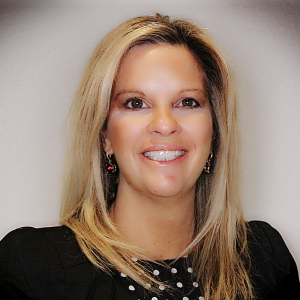 Jennifer Flynn: When I joined as the Head of Capital One’s Small Business Bank (SBB) division in June 2018, the team was on an incredible cultural journey with a huge focus on inclusivity and creating a sense of belonging across all of our sites. I knew immediately that I wanted to be a part of this transformation. Together, with my leadership team, we declared “reimagining our associate experience” as one of our top goals for 2019. This includes investing in our leaders, promoting flexibility, and embracing differences across our teams. We actively encourage each associate to bring their authentic selves to work each day, and I love watching this transform our division’s culture. Our SBB team is always raising the bar; our business is better because of how we work, and as a result, so are our customers.
Jennifer Flynn: When I joined as the Head of Capital One’s Small Business Bank (SBB) division in June 2018, the team was on an incredible cultural journey with a huge focus on inclusivity and creating a sense of belonging across all of our sites. I knew immediately that I wanted to be a part of this transformation. Together, with my leadership team, we declared “reimagining our associate experience” as one of our top goals for 2019. This includes investing in our leaders, promoting flexibility, and embracing differences across our teams. We actively encourage each associate to bring their authentic selves to work each day, and I love watching this transform our division’s culture. Our SBB team is always raising the bar; our business is better because of how we work, and as a result, so are our customers.